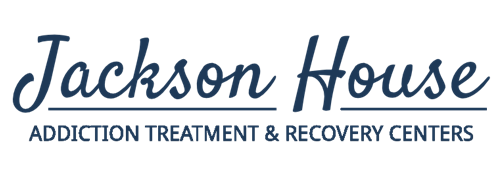Admission Line (866) 396-3655
Why Is Fentanyl So Dangerous?

Fentanyl is a prescription drug for pain management (often post-surgery). However, it is also available on the street, leading to serious public health concerns. Unlike conventional morphine, this synthetic version is far more potent, meaning even the tiniest quantities are sufficient to kickstart dependency. Criminals sell it illegally (and in varying grades), increasing the risk of overdose and severe medical complications.
Fortunately, treatment is available. Rehab clinics can provide safe spaces for kicking the fentanyl habit and getting your life back on track.
The purpose of this post is to explore the dangers of fentanyl. We look at the human toll of using the drug and signs you might have an addiction.
What Is Fentanyl?
Fentanyl is a synthetic opioid. It is a Schedule II controlled substance in the U.S. because of the high risk of addiction. Whereas conventional opioids come from natural resources, such as poppies, fentanyl is manufactured under controlled lab conditions.
Fentanyl has legitimate medical uses, including treating severe pain after an injury or aiding in pain management after surgery. Most versions of the drug are injectable, though it is also available in tablets and sprays.
Why Is Fentanyl So Dangerous?
To put it simply, improper use of fentanyl is highly dangerous. Lab techniques let chemists concentrate the active ingredients to an extreme, making legally manufactured fentanyl tremendously more potent than morphine or even heroin. For this reason, the risk of overdose is high. Ingesting a tiny amount can result in life-changing consequences.
Fentanyl is also dangerous because, once ingested, it has a rapid onset, but the effects subside quickly, increasing the risk of taking another dose.
Lastly, the lack of quality control and variability in street supply is a risk. Dealers don’t face the same regulatory controls as pharmacists, making it hard for users to determine how much fentanyl they are ingesting. Dealers may also disguise fentanyl as part of another drug, allowing users to take toxic combinations of compounds without their knowledge.
The Human Toll of Fentanyl Use
In 2022, the U.S. reported more than 73,000 deaths involving fentanyl overdoses. In 2023, fatalities resulting from opioid misuse fell 4 percent for the first time in recent years.
Beyond the raw figures, the community impact is tremendous. Few (if any) families remain untouched by the epidemic, which takes the lives of children, parents, siblings, friends, and work colleagues.
The healthcare system is also being pushed to its breaking point by the number of patients requiring treatment. Recent figures suggest the total cost of opioid use disorders and fatal overdoses is over $8 billion.
How Do I Know If I Have a Fentanyl Addiction?
The signs of fentanyl addiction are usually clear-cut. Physical signs include:
- Cold and clammy skin
- Feeling sick or vomiting
- Small pupils
- Trouble breathing and seizures (in severe cases)
- Trouble going to the bathroom
Behavioral symptoms of fentanyl addiction include:
- Spending time with other people who take fentanyl
- Taking risks to obtain fentanyl (such as stealing or breaking into pharmacies)
- Trying to hide drugs or symptoms from family members, friends, and work colleagues
Finally, psychological signs of fentanyl use include:
- Anhedonia, a loss of interest in formerly stimulating activities
- Increased irritability and mood swings
- Obsession with taking your next fentanyl hit
- Trouble with decision-making and concentration
Evaluate your fentanyl tolerance and dependence when observing these symptoms. If you need to use more of the substance to have the same effect, it can be a sign of physical dependence.
Also, consider your cravings. The more intense they feel, the more likely urgent medical assistance is needed. You may experience yourself losing control over your consumption, taking more of the compound even when you know the adverse consequences.
Finally, you may have a fentanyl addiction if you notice physical and emotional withdrawal symptoms when you stop taking it. These include:
- Excessive sweating or chills
- Feelings of anxiety and dread
- Low mood or depression
- Muscle pains and aches
- Trouble getting to sleep at night
Fentanyl use may be impacting your daily life, interfering with work or relationships. You might be unable to concentrate on tasks or maintain healthy interactions with your children.
How to Combat Fentanyl Addiction
Fortunately, you can combat fentanyl addiction with professional support. Jackson House Recovery Centers offers evidence-based treatments to detoxify your body and get you off this harmful substance. Various options are available, including medication-assisted therapy, counseling, and strategies to prevent relapse from recurring.
If you are currently using fentanyl and believe you have an addiction, consider using Safe Consumption Sites (SCSs). These let you use substances under medical supervision to improve safety while benefiting from addiction treatment resources.
You may also want to prepare for the worst by carrying naloxone with you. This medication can counteract the effects of opioids, reducing the risk of overdose.
Finally, consider education and awareness. The more you understand about the risks of fentanyl addiction, the more you can protect yourself. Many don’t know the dangers until it’s too late.
Get Help for Fentanyl Addiction
In summary, fentanyl is a dangerous opioid because of its high concentration. Gram for gram, the substance is over a hundred times more potent than most opioids. Worse still, you don’t know the concentrations when bought on the street. Slight errors can be fatal.
Fortunately, help is available. If you need support recovering from a fentanyl addiction, reach out to Jackson House Recovery Centers today to get the help you need.
